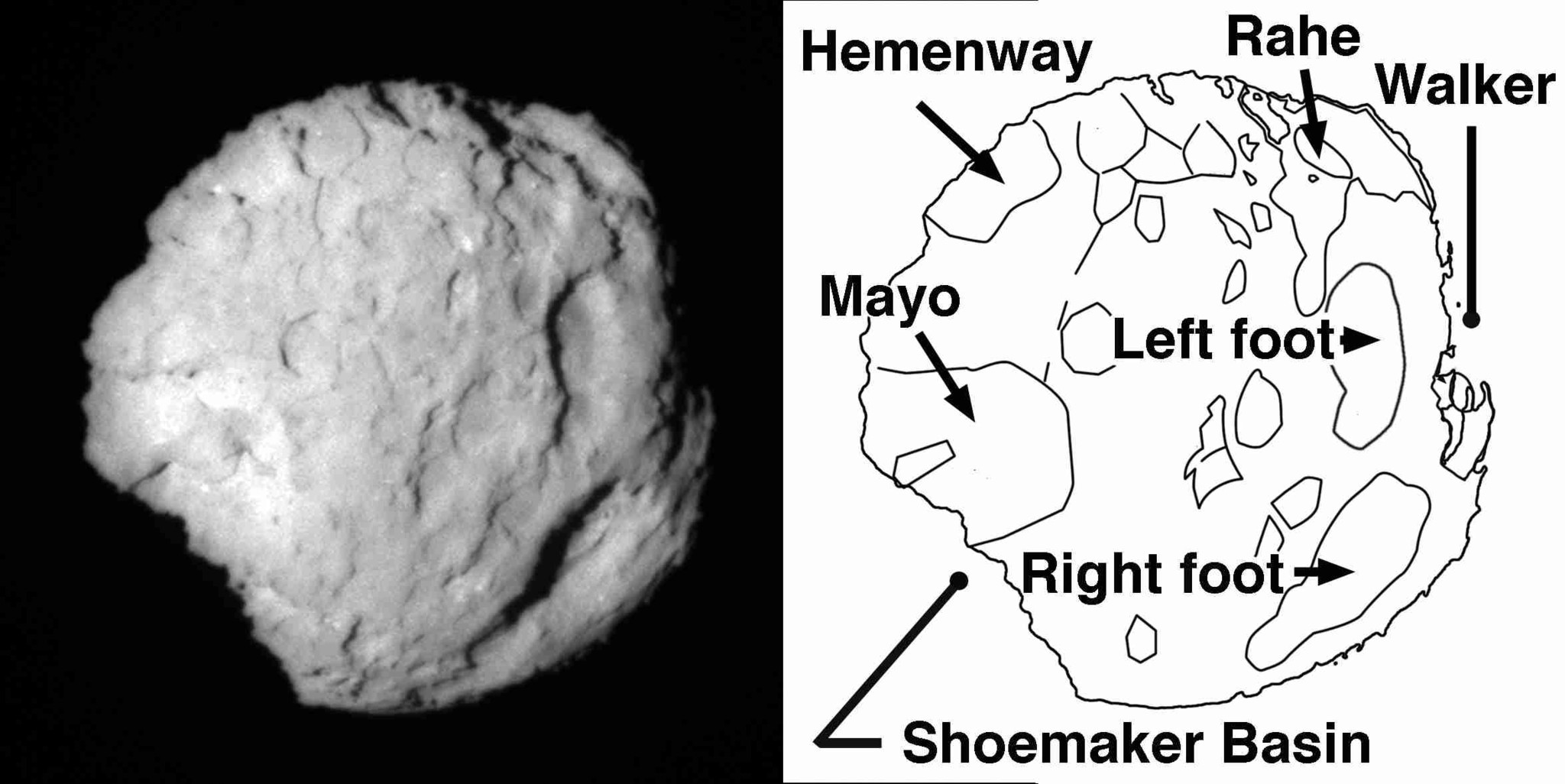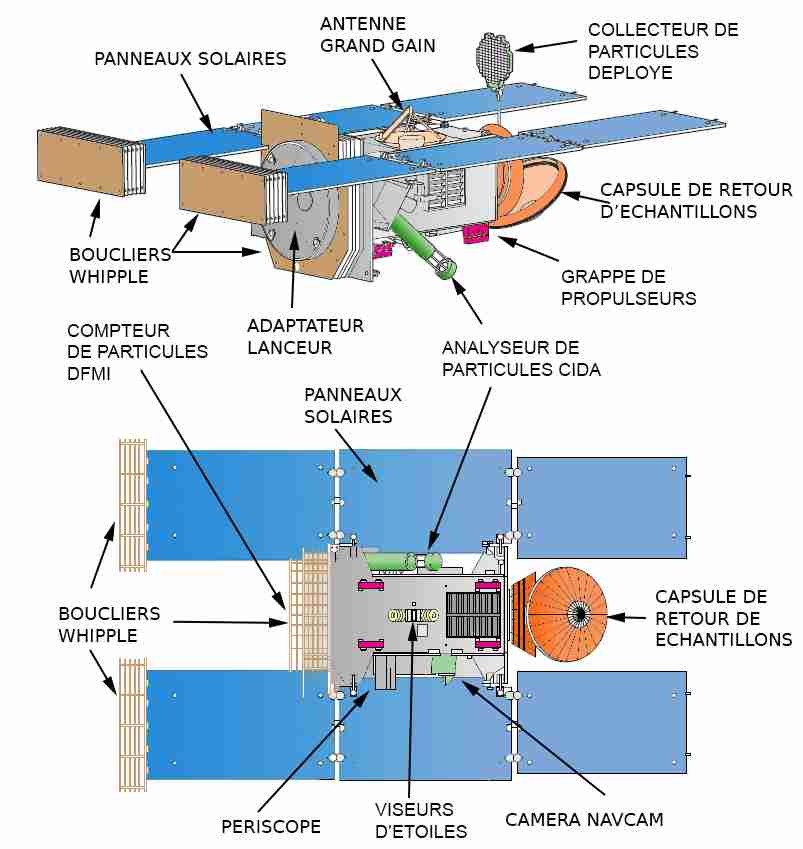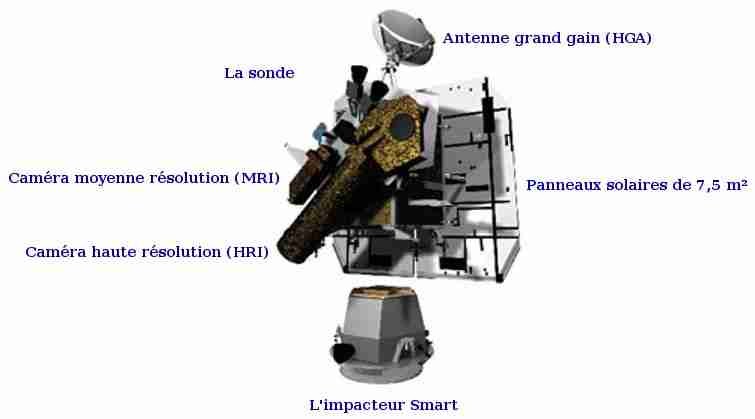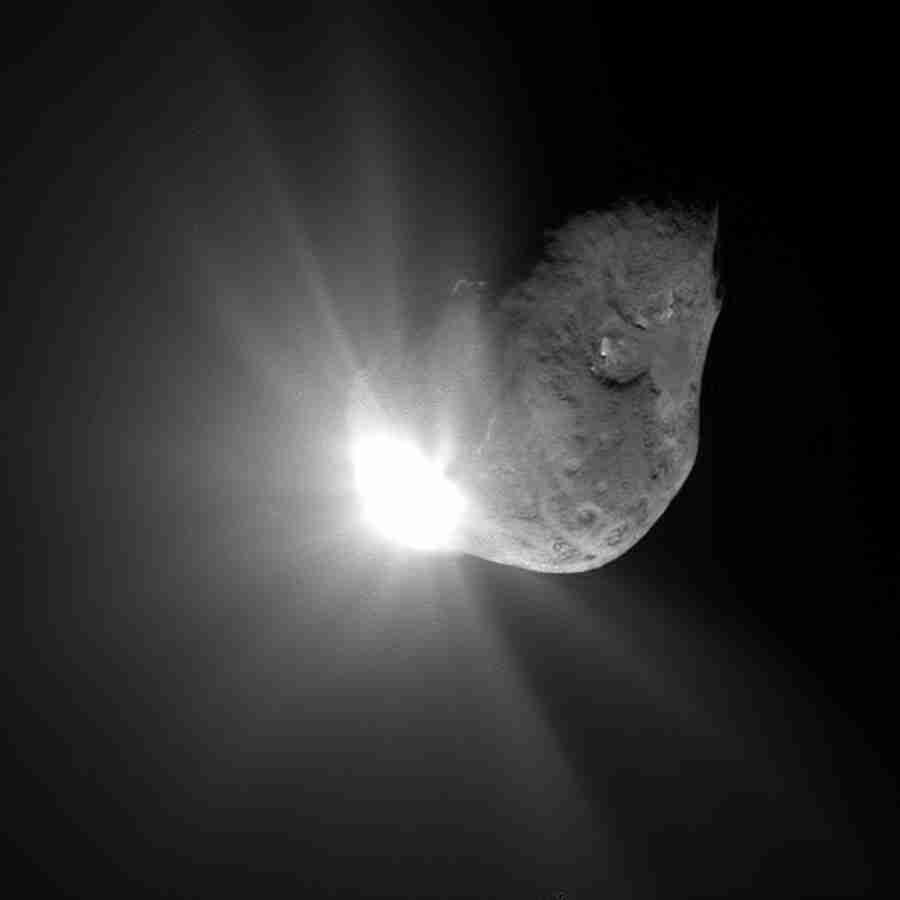Organic matter is abundant in unaltered cometary grains. Aromatic compounds (containing benzene rings) are found there as well of non-aromatic compounds such as hydrocarbon chains. And above all, an amino acid, glycine, was discovered in comet dust, which opens new perspectives for exobiology. This discovery, confirmed in 2015 by the Rosetta probe in the comet 67P/Churyumov-Gerasimenko, suggests that comets could have brought complex organic molecules to Earth.
Some grains of the comet 81P/Wild 2 are very similar to those collected in the atmosphere by airplanes flying at high altitude. They are probably genuine interstellar grains; but how were they incorporated into cometary nuclei?

Le noyau de la comète Wild 2, cible de la mission Stardust. Son diamètre est de 5 km, et il présente des cratères d’impact dû à des astéroïdes rencontrés au cours de son trajet.
Crédit : NASA

La sonde Stardust de la NASA. Elle se déplace vers l’avant gauche par rapport à la comète, et les panneaux solaires sont protégés de l’impact des poussières cométaires par les boucliers parallélépipédiques, dont le principe est dû à Fred Whipple.
Crédit : NASAIn January 2005, NASA launched another probe, the Deep Impact, intended to fly over the nucleus of comet 9P/Tempel 1 and to hit its surface to observe the nature of the material ejected during the impact. Deep Impact carried a 372-kilogram (820-pound) impactor named Smart. Dropped on July 3, 2005, Smart hit the comet a day later, while the probe observed the impact from 500 km away. The impact caused a very important ejection of dust: the nucleus was probably covered with very fine grains. However, it was difficult to infer unambiguously the properties of this surface. Further exploration was needed to truly understand the nature of a comet nucleus.

La sonde Deep Impact. Elle embarque deux caméras et un spectromètre infrarouge pour l’analyse des produits éjectés. L’impacteur Smart est doté de sa propre caméra, qui a fonctionné jusqu’à l’impact. La sonde communique grâce à son antenne orientable.

Le noyau de la comète Tempel 1 photographié par la sonde Deep Impact juste après la collision, le 4 juillet 2005. Sa taille est d’environ 7 km. Les jets de poussières partant de la région touchée diffusent la lumière du Soleil
Crédit : NASA